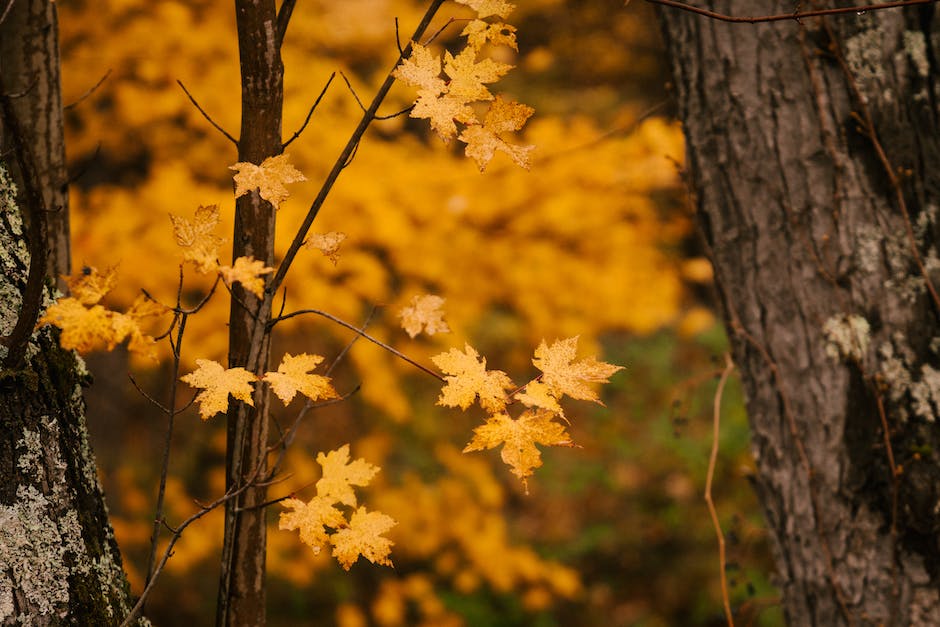Optimal Timing for Pruning Maple Trees

As an admirer of maple trees in our surroundings, it’s vital to acknowledge the importance of understanding their biological cycles and how they affect their health when pruned. Maple tree biology provides us with interesting and enlightening insights into their growth cycle, sap flow, and their natural healing process. Equally important are the seasons that catalyze their growth and the times when they go dormant. A deep understanding of this biological cycle plays a key role in knowing when the trees can recover quickly from pruning and when they shouldn’t be pruned. In this discourse, we’ll also delve into the various techniques of pruning, including a safety guide and the tools required to perform the task. Lastly, improper pruning can have detrimental effects, thus, learning how to prune in a way that promotes tree health and aesthetics is imperative.
Understanding Maple Tree Biology
The Science of Pruning: Unraveling the Biological Peculiarities of Maple Trees
Do you happen to share the same passion for maple trees and their meticulous care? If so, then you’re exactly where you need to be! Delving deep into the science of maple trees and how their unique biological characteristics influence pruning is a captivating journey that every die-hard maple enthusiast should embark upon.
Maple trees, with their spectacular autumn colors and sturdy timber, hold a charm that is undeniable. Understanding their biological traits is instrumental in mastering the art and science of pruning! Let’s dive right in and unravel these natural wonders!
Initially, it’s the growth habit of maples that set the trajectory for precision pruning. Maples grow in a “central leader” pattern, with one primary trunk and numerous lateral branches. By acknowledging this growth pattern, our pruning maintains the natural structure, prevents co-dominant leaders, and mitigates the risk of breakage.
One of the most compelling characteristics of maple trees is the predilection towards “bleeding”. They have the propensity to discharge sap when cuts are made during the late winter and spring. While it’s an innocuous phenomenon that doesn’t affect the tree’s health, it’s a visual concern for tree enthusiasts. Hence, it’s advisable to prune when the tree is dormant or during late summer when bleeding is minimal to non-existent.
Another biological piece of the puzzle is the rapid wound closure in maples. Wrap your head around this – when a cut is made, the tree isolates the wound and starts creating “woundwood” to protect it. A rule of thumb that roots deep in this phenomenon is to prune without leaving stubs and avoid flush cuts. Make your cut just beyond the branch collar to help foster rapid wound closure.
Moving on to a key element that influences maple tree pruning – leaf buds. Maples have opposite branching, meaning leaf buds are set opposite each other on a branch. Identifying these buds is crucial, for the cut should be made right above an outward-facing bud. This selection promotes an outward growth pattern, creating an open canopy and setting the stage for a robust and aesthetic maple tree.
Last, but certainly not least, the maple tree species play a pivotal role in pruning strategy. A Sugar Maple, with its unique branching and growth, requires a different pruning approach than the Japanese Maple, known for horizontal branching. Acknowledging species-specific traits enriches the pruning process – enhancing both tree health and aesthetics.
To culminate – unravelling the biological peculiarities of maples paves the path to effective pruning. By understanding the science that emerges from life and growth in these trees, we ensure their longevity, chronicling a symphony of change that seasons bring forth, and pay tribute to our shared enthusiasm for the majestic maple trees. Remember, great care is the heart of great pruning, and knowledge is indeed our most formidable tool in this endeavor. Happy pruning, fellow maple enthusiasts!

Pruning Techniques
Mastering Maple Tree Maintenance: Effective Pruning Techniques
Step into the world of arboriculture and you’ll quickly discover that the art of pruning, especially when concerning maple trees, can be quite an intense and rewarding hobby! Let’s delve into the fascinating details of effective pruning techniques which, when applied correctly, can keep your maple tree looking lush all year round.
First and foremost, it’s critical to remember the best times to prune your majestic maple. Pruning should typically be carried out late in winter or early spring, just before the new growth starts. This period is generally right before the sap starts to flow heavily which can prevent the tree from excessive ‘bleeding’. Remember, timing in pruning is everything!
Do you know those smaller branches within your tree that don’t add much to its overall aesthetic? Those are your first point of attack; removing them will aid in understanding the tree’s overall structure and will help the tree maintain its vitality. The rule to keep in mind here is: The smaller the branch, the easier it is for a tree to heal the wound left behind from pruning.
Roaming around your maple tree, you might notice certain branches rubbing against each other, typically referred to as cross branches. This is a definite no-no for the tree’s health as they make the tree more susceptible to storm damage. Prune them to prevent future damage while retaining the tree’s natural structure.
On your horticultural adventure, you might encounter branches infested with diseases or pests or branches that seem weak or damaged. These too need to be pruned, as they can negatively affect the tree’s health. Safety while pruning dead or damaged branches is paramount – always keep an eye out and ensure you’re using the right protective equipment.
Now, how should you approach the actual act of pruning? The branch collar – the region where the branch connects to its parent branch or stem – is your guiding star. Do not cut into the branch collar. Ideally, you want to make a clean cut just outside the line of the branch collar. Doing so promotes healthy recovery and prevents decay from creeping into the tree.
Remember, every cut should be made with a clear purpose in mind: usually to encourage growth, maintain natural structure or to invigorate the tree’s vitality. Over-pruning should be avoided as it could stress the tree out, leading to potential health issues and compromising the tree’s growth.
Correctly pruning your maple trees won’t just yield a vibrant tree and gorgeous fall colors, but also offer the satisfaction of your green hobby resulting in a flourishing landscape that all can admire. Enjoy your journey in the world of arboriculture, fellow hobbyists! It’s quite the heartening endeavor!

Practical Timing Guide for Pruning Maple Trees
Journey into the World of Caring for Maple Trees: Practical Timing for Pruning.
It’s no secret that maple trees are among the au naturel beauties of Mother Earth that we hobbyist arborists treasure most. These leafy monarchs demonstrate a wild diversity with over 128 species, each with its own unique foliage, growth patterns, and needs. But let’s dive into one of those needs in detail – pruning, and more specifically, the practical timing for it.
Pruning can be likened to a tree’s ‘health check-up.’ It’s our way, as plant enthusiasts, to ensure our maples stand tall, lush, healthy and proudly resplendent with their captivating hues during the autumn months. If you’re a seasoned maple tree hobbyist, you’ll understand the necessity of timing it just right.
So when is the best time to prune our leafy friends? Generally, late winter and early spring are prime moments. But why this timeframe, one might ask? As the tree is still dormant during cold months, it reduces the chance of ‘bleeding’ sap. And as sap obsessions have been demystified already, let’s delve right into reasons behind this timing preference.
‘Disease Prevention’ is the magic phrase here. Late winter to early spring, particularly February to March, falls outside the active transmission periods of most tree diseases. Pruning in these months reduces the risk of infecting the fresh cuts.
On the other hand, avoid the temptation of pruning your maple trees in spring when the buds are developing. This period is when the tree’s energy reserves are depleting and it can lead to stunted growth or even make the tree susceptible to disease.
There’s another nifty detail not to overlook when it comes to maple tree pruning – the size of the branch. Prioritize smaller branches that you can handle, preferably diameters of less than 5 inches. Larger branches should ideally be left to professionals to avoid compromising the tree’s health or your own safety. Equipped with the right set of tools, patience, and a passion for the flora world, you’ll masterfully navigate through the network of branches, ensuring your maple tree’s radiant health and vitality.
Always remember, doing justice to your beloved maple trees involves proper treatment, care, respect, and adequate knowledge. The act of pruning is marvellous in its own right; while systematically eliminating diseased or damaged wood, you’re also fostering the tree’s growth and promoting its longevity.
As you prudently snip away at misplaced branches, wearing your safety gear and reveling in the fresh outdoor air, a sense of tranquil satisfaction settles over you. This satisfaction comes from knowing you’re contributing to the wellbeing of these beauties. Not only are you nurturing a robust tree, but you’re also sculpting an eye-soothing view for your neighborhood, letting all marvel at the splendor of Autumn’s palette.
Indeed, embracing the rewarding hobby of arboriculture not only transforms your backyard into a vibrant spectacle but also stretches out an inviting hand towards an environmentally healthier planet. It’s a captivating world within the wide, green realm of gardening that demands enthusiastic participation, mindfulness, and the purest form of love for nature. Pruning maple trees then, do it tactfully and mind the timing; the trees will reward you with their healthy, breathtaking elegance.

Wrapping up, our maple trees immensely depend on factors such as the timing and techniques employed in pruning to ensure their overall health, longevity, and aesthetics. Comprehending the intricate biological cycles of the trees and aligning them with the correct pruning practices offers the best approach. Overlaying these insights with practical timing guidelines for pruning produces an optimum tree care plan. Thus, as custodians of our environment, let us embrace evidence-based and considerate tree care practices that ensure our maple trees, and indeed all trees, continue to thrive and serve their ecological role, as we also enjoy their aesthetic value. By doing so, we’re not only enriching our landscapes but also contributing positively to the global tree care discourse.



